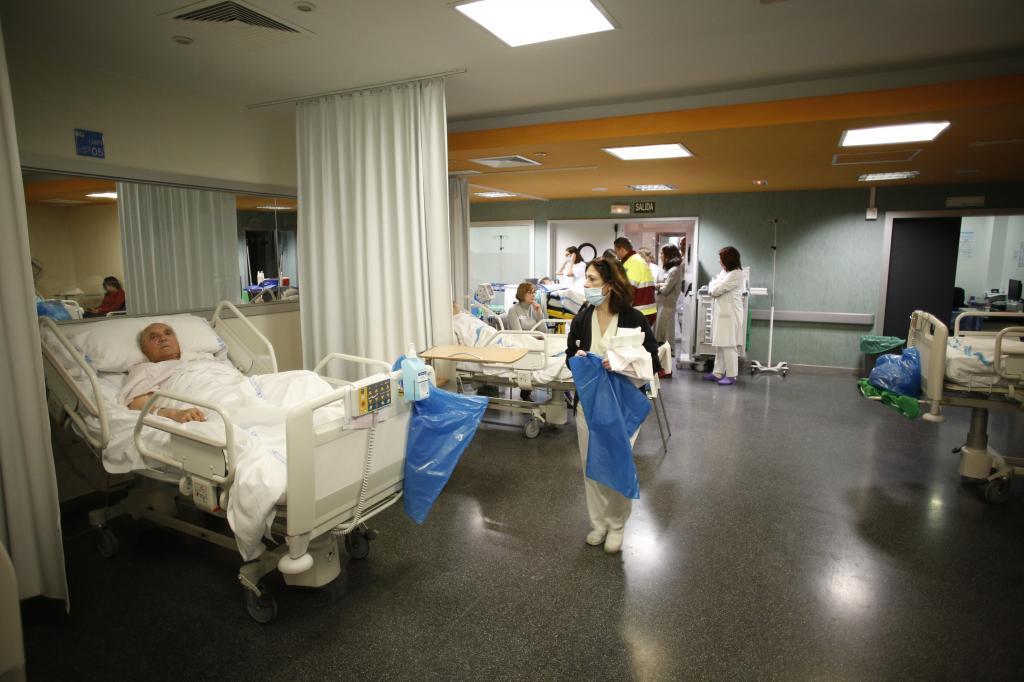- Ranking. Six medical societies willing to do self-criticism
What autonomy has the best health? Yesterday the Federation of Associations in Defense of Public Health (Fadsp) wanted to answer this question with the publication of a new edition of its ranking of health services.
And according to his study Navarra, Basque Country, Aragon and Asturias enjoy the best public health . With regular sanitary services would include Castilla y León, Castilla-La Mancha, La Rioja and Extremadura. With a public health already qualified as deficient, Baleares, Galicia, Cantabria, Madrid and Valencia would appear. The list of the worst health services would include Catalonia, Andalusia, Murcia and the Canary Islands.
The study of Fadsp, however, is not without controversy. Not in vain, to make its classification includes among its indicators (in negative) issues such as the mere existence of formulas for the privatization of health or private provision of public health and even the possibility that the doctor reconciles his public employment with the exercise in the private
What is the ranking based on?
Specifically it is based on 33 indicators . Thirteen of them are dedicated to questions about financing, resources and functioning of the health system (such as number of beds per thousand inhabitants or doctors and nurses), five other indicators focus on pharmaceutical policy (such as growth in pharmaceutical expenditure), four are about citizen valuation (as citizen satisfaction).
Finally, there are five other indicators on the waiting lists (included in these indicators, some data on the perception of the citizen on the evolution of the lists) and another six on health privatization (both on the existence of formulas for administrative concessions and the mere number of private consultations per inhabitant).
Based on these data, the Federation of Associations in Defense of Public Health, chaired by Marciano Sánchez Bayle, gives a global assessment of the autonomous health systems.
The pitfalls of classification
And, although the indicators that it uses have been extracted from official sources, they are not exempt from strong criticism in many ways since, for example, in addition to considering any concession to the private one , it is also valued in negative without further the number of medical consultations in private health without taking into account the income of the autonomy or does not take into account the aging or dispersion of the population when analyzing the number of doctors per thousand inhabitants.
Nor is there a weighting between the different indicators, weighing equally for the purposes of ranking, for example, the impact of being in the best or worst positions in the number of emergencies with the percentage of growth in pharmaceutical expenditure or out-of-pocket expenditure of the citizen in pharmacy , without assessing the real effect on the health of the population that each of these issues has.
With similar criticisms to these, he expresses himself on the ranking of the Fadsp Ildefonso Hernández, responsible for the Spanish Society of Health Administration and Public Health ( Sespas ). In his opinion, "without taking away the merit of the effort of this kind of work, you cannot measure only quantity without including criteria of quality of care because it is useless to look at the number of beds if you do not think that doing well the things in prevention likewise need fewer beds or that there is home care. The same goes for the number of diagnostic tests. Is it good to do many tests? Not always. "
And it is that doing a health ranking is not easy. Among the experiences with more experience in Spain are ranked as the Top 20 Hospitals (public and private, classified by medical services and size and complexity of the hospital) that the Iasist consultancy has been preparing for two decades and that maintains the handicap of being of participation voluntary Recal studies promoted by the IMAS Foundation that analyze the health resources available in each hospital and autonomies by areas of medicine (Cardiology, Pulmonology, etc.) and their possible impact on the health outcomes of population.
Differences up to double in mortality
These last studies, the Recal, have managed, for example, to demonstrate autonomic differences of up to double in the mortality in the Internal Medicine services of the hospitals and of up to 60% in the mortality due to infarction according to the autonomy in which the Patient was treated. However, these latest studies do not make public the data by hospitals or autonomies but only analyze the data to internally help improve those who go to the queue of the ranking.
The president of the Federation of Medical Scientific Associations (Facme), Fernando Carballo, explains in relation to the ranking of health services of the Fadsp that "without entering into the methodological problems that the study may have, what seems evident and undeniable is the existence of strong differences between autonomies in all the most common performance indicators. "
For Carballo, the lesson is to understand that "there is inequality between autonomies and it must be corrected. But there are also missing indicators to measure the health outcomes achieved by health services, to measure their performance, how they are doing it, and not just what resources have or how much they spend. "
According to the criteria of The Trust Project
Know more- Health
- Science and Health
HEALTHCrimea-Congo, Zika, Chikungunya, Dengue ... This is the exotic virus that stalks us
MusicThe summer song is good and necessary: "It's like a medicine against stress"
Health WHO warns that the number of measles cases in the world has tripled

